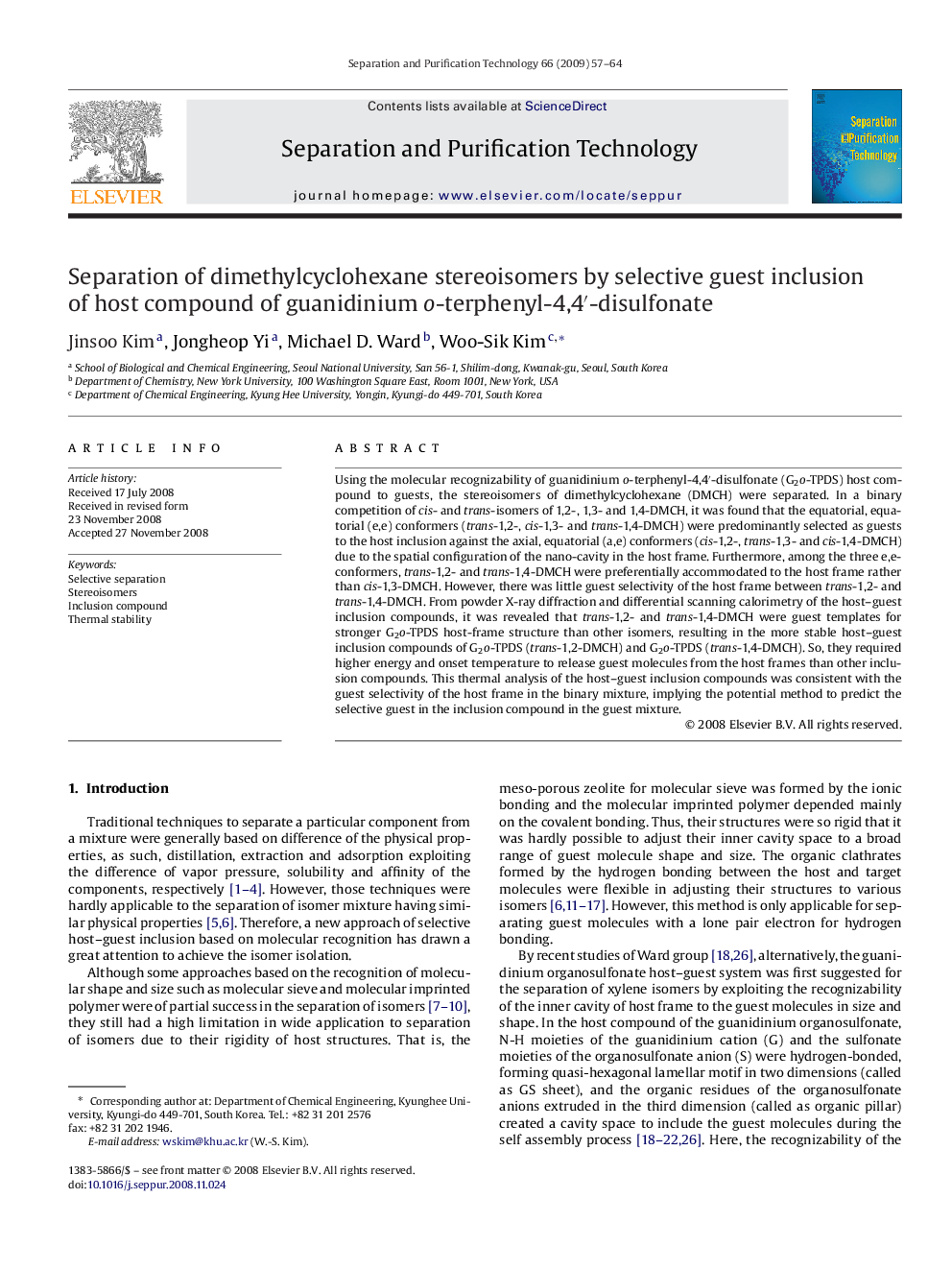| Article ID | Journal | Published Year | Pages | File Type |
|---|---|---|---|---|
| 643293 | Separation and Purification Technology | 2009 | 8 Pages |
Using the molecular recognizability of guanidinium o-terphenyl-4,4′-disulfonate (G2o-TPDS) host compound to guests, the stereoisomers of dimethylcyclohexane (DMCH) were separated. In a binary competition of cis- and trans-isomers of 1,2-, 1,3- and 1,4-DMCH, it was found that the equatorial, equatorial (e,e) conformers (trans-1,2-, cis-1,3- and trans-1,4-DMCH) were predominantly selected as guests to the host inclusion against the axial, equatorial (a,e) conformers (cis-1,2-, trans-1,3- and cis-1,4-DMCH) due to the spatial configuration of the nano-cavity in the host frame. Furthermore, among the three e,e-conformers, trans-1,2- and trans-1,4-DMCH were preferentially accommodated to the host frame rather than cis-1,3-DMCH. However, there was little guest selectivity of the host frame between trans-1,2- and trans-1,4-DMCH. From powder X-ray diffraction and differential scanning calorimetry of the host–guest inclusion compounds, it was revealed that trans-1,2- and trans-1,4-DMCH were guest templates for stronger G2o-TPDS host-frame structure than other isomers, resulting in the more stable host–guest inclusion compounds of G2o-TPDS (trans-1,2-DMCH) and G2o-TPDS (trans-1,4-DMCH). So, they required higher energy and onset temperature to release guest molecules from the host frames than other inclusion compounds. This thermal analysis of the host–guest inclusion compounds was consistent with the guest selectivity of the host frame in the binary mixture, implying the potential method to predict the selective guest in the inclusion compound in the guest mixture.
